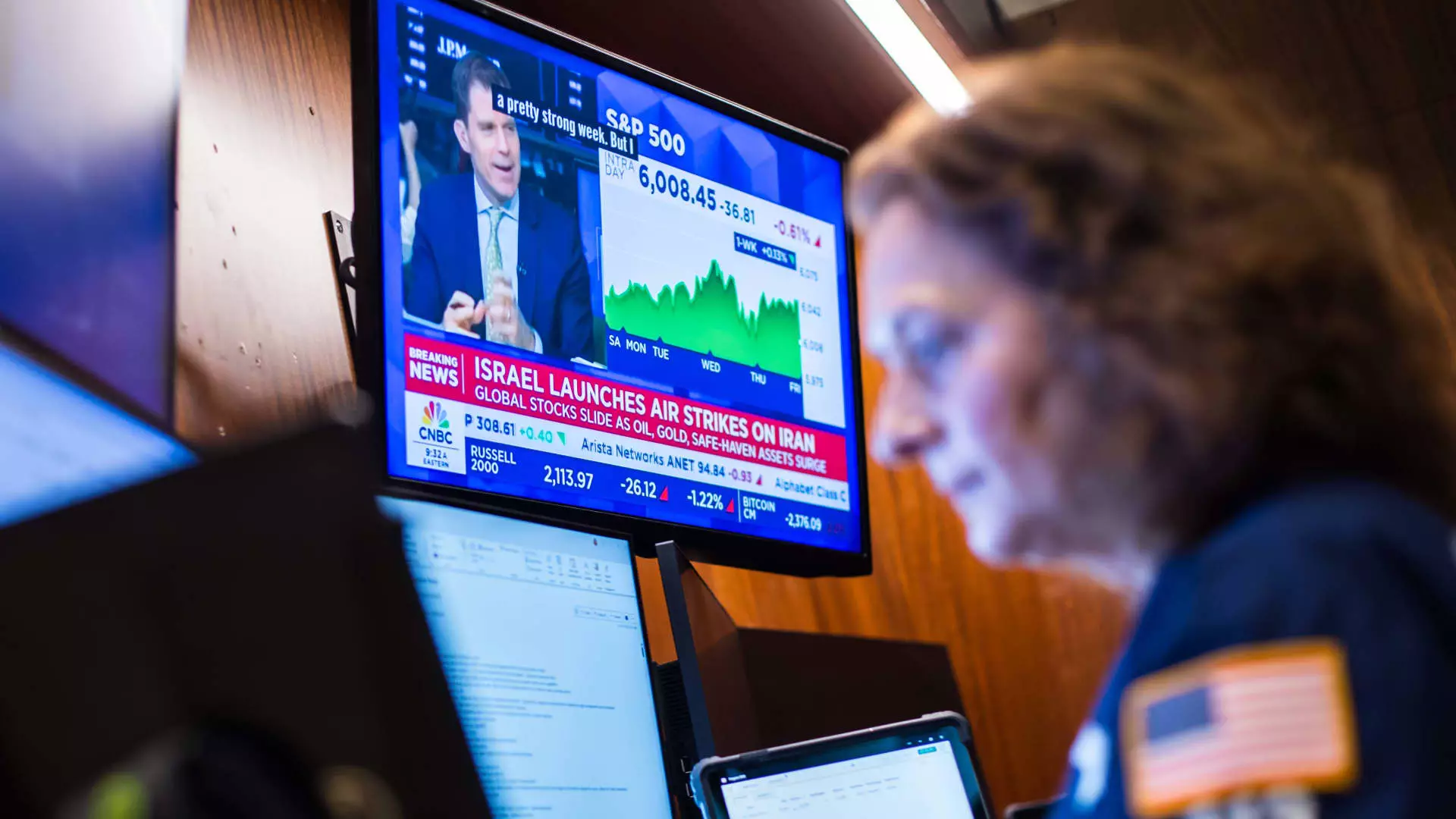This past week was anything but serene for investors as a whirlwind of geopolitical tension kicked off on Friday, following Israel’s aggressive strike on Iranian nuclear facilities. This audacious military action reverberated throughout global financial markets, exemplifying the profound fragility of investor confidence in the face of escalating international crises. The immediate consequence was felt acutely in the U.S. stock market, with the S&P 500 and Nasdaq Composite experiencing marked declines of 1.13% and 1.3%, respectively.
As the tensions flared, investors sought refuge in traditionally safer assets, driving the price of gold to a two-month high while oil prices soared by around 7% for both Brent crude and West Texas Intermediate. This strategic shift in investment patterns not only underscores the volatile interplay between geopolitics and finance but also reveals a stark reminder: global stability remains an elusive goal. Until there is a significant thaw in relations, markets could continue to oscillate wildly, feeding on the uncertainty and fear that geopolitical conflicts inevitably generate.
Economic Indicators: A Mixed Bag of Optimism and Caution
Encouraging news did surface on the economic front this past week, providing a slight balm to the raw wounds inflicted by geopolitical instability. Data released on inflation showed signs of moderation, with both the consumer price index and the producer price index coming in lower than anticipated. These figures should delight any serious economists among us; however, we ought to temper our enthusiasm. A softening labor market remains an ominous shadow looming over the economy, with continuing jobless claims at multi-year highs.
At first glance, the narrative seemed overwhelmingly positive: inflation stagnating, unemployment low, and consumer purchasing power increasing. However, the reality may be more nuanced. Accumulated data do suggest gradual economic improvement, yet it is crucial to recognize that we are navigating through a storm of mixed signals. Investors must tread carefully, as the stability this economic data suggests might be undercut by the geopolitical chaos that seems increasingly omnipresent.
Artificial Intelligence: The New Gold Rush Amidst Market Turmoil
As if to distract the markets from the cacophony of geopolitical concerns and economic signal confusion, the rapidly evolving field of artificial intelligence continued to capture headlines this week. The tech sector revelled in a flurry of news related to AI advancements. Notably, Apple’s Worldwide Developer Conference left many expecting substantial breakthroughs, but the anticipated updates fell flat, inciting disappointment among investors who had hoped for cutting-edge revelations.
In stark contrast, Meta Platforms garnered much attention by announcing a strategic investment in Scale AI. This bold move to establish a “superintelligence” division signals a shift toward daring advancements in AI that may redefine the tech landscape. However, one must ponder: is this a sign of genuine innovation or merely a desperate attempt to keep pace with competitors like Nvidia? The latter company, also in the spotlight this week, assured audiences that demand for computing power in the AI sector is soaring, predicting an exponential growth rate in Europe over the next two years.
Moreover, Oracle’s latest quarterly report exceeded expectations, pushing its stock into bullish territory. Yet, while optimistic narratives often accompany tech investments, we must remain vigilant. Are these stocks rising due to substantive growth, or are they riding a wave of speculative enthusiasm? As Advanced Micro Devices announced plans for its own AI server chips, they placed themselves into a fierce struggle against industry giants, reminding all investors that competition in this space could lead to significant volatility going forward.
The Role of Trade Relations in Global Stability
Another noteworthy moment came when U.S. and Chinese delegations tentatively agreed on a framework for a trade deal, primarily focused on rare earth minerals. This development should be celebrated as a potential thaw in one of the most fraught trade relationships in recent memory. Yet, skepticism lingers—will this agreement yield tangible benefits, or will it dissipate like vapor under the unforgiving sun of international politics?
The markets have consistently reacted to the ebbs and flows of U.S.-China relations. On one hand, the prospect of stabilizing trade offers a glimmer of hope, but on the other, we know all too well how quickly agreements can crumble under pressure. With tensions remaining high, both in the economic and military realms, investors are left grappling with a precarious balancing act: enjoying the potential benefits of international cooperation while bracing for the fallout of unforeseen global tensions.
In sum, this week served as a poignant reminder that while the world economy can show encouraging signs, it remains rife with instability. Investing in this climate demands a delicate blend of scrutiny, patience, and a healthy dose of skepticism. As the global landscape continues to shift, those who navigate with both caution and curiosity will likely emerge as the true victors.

